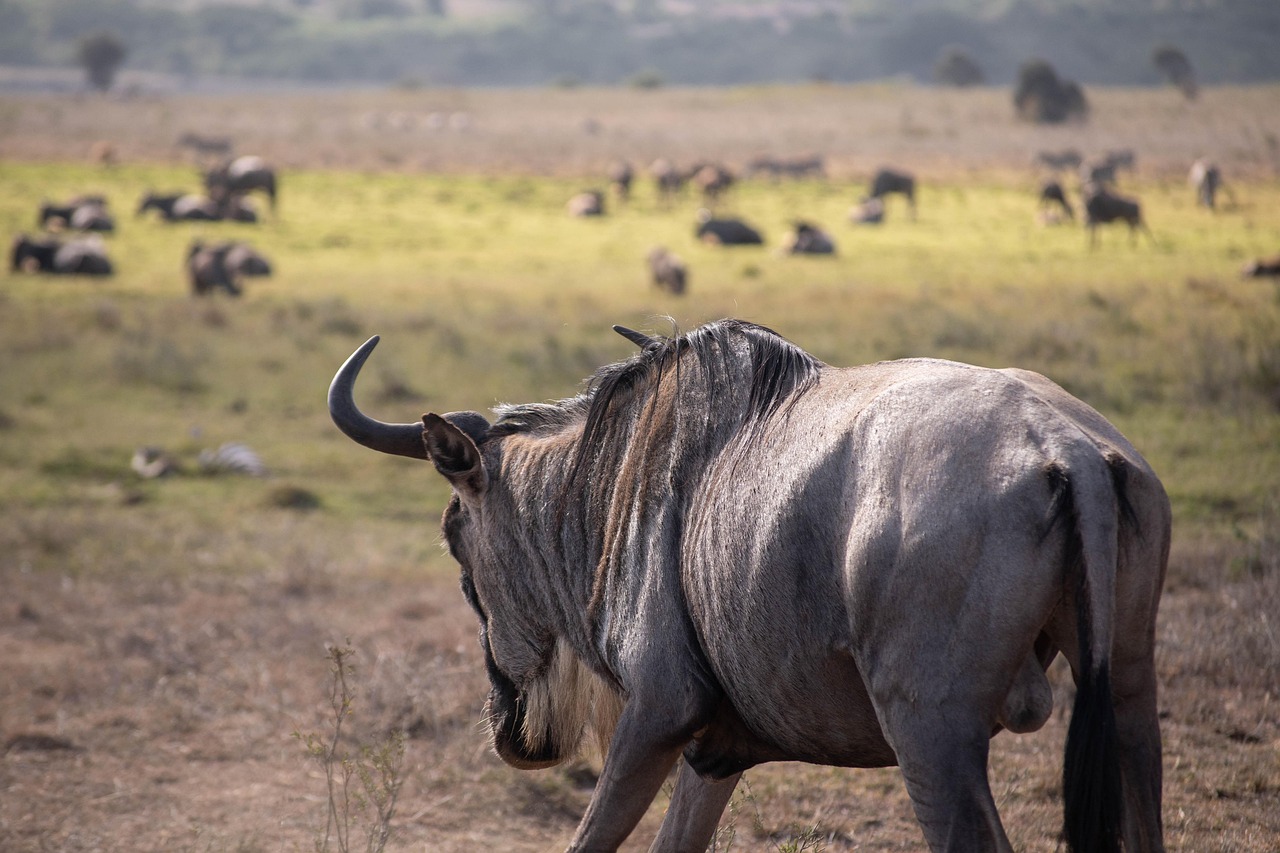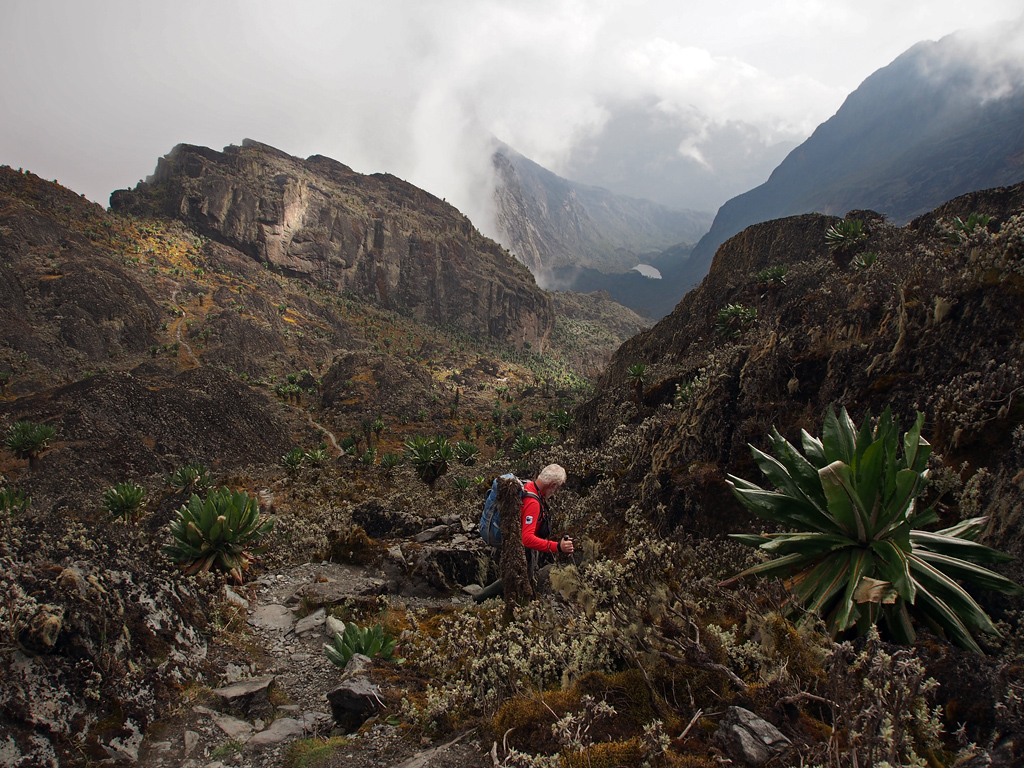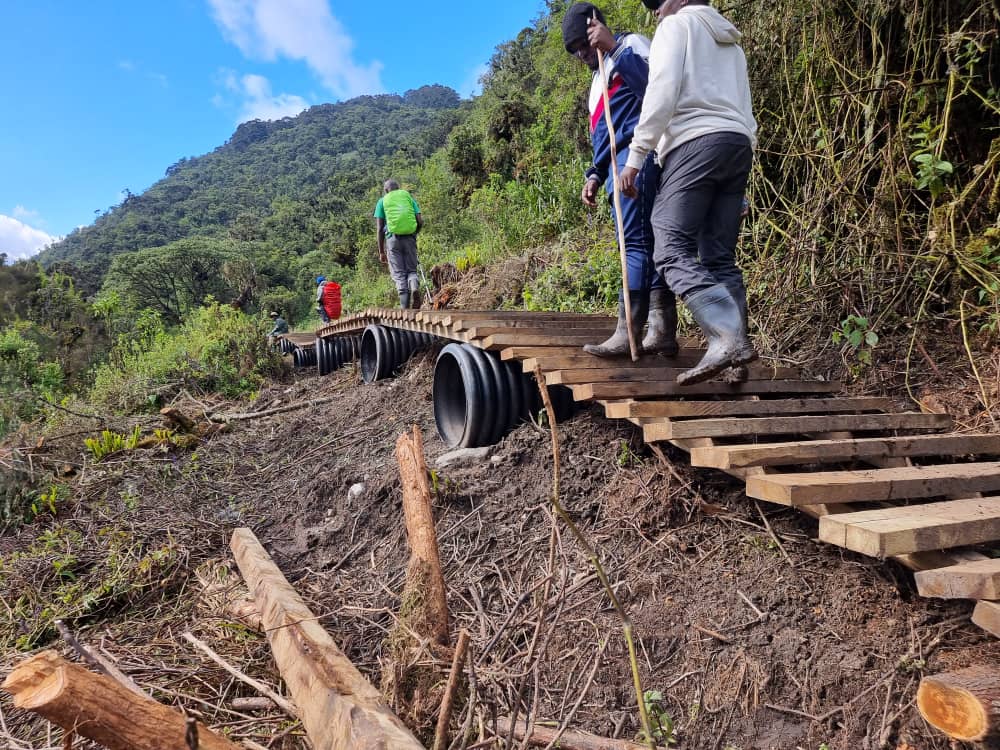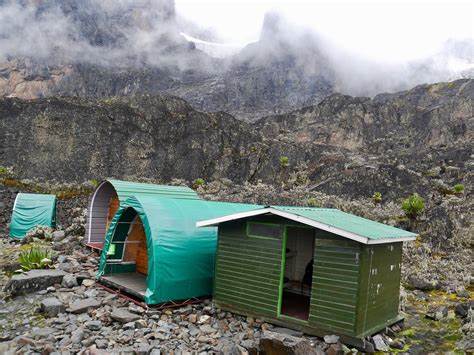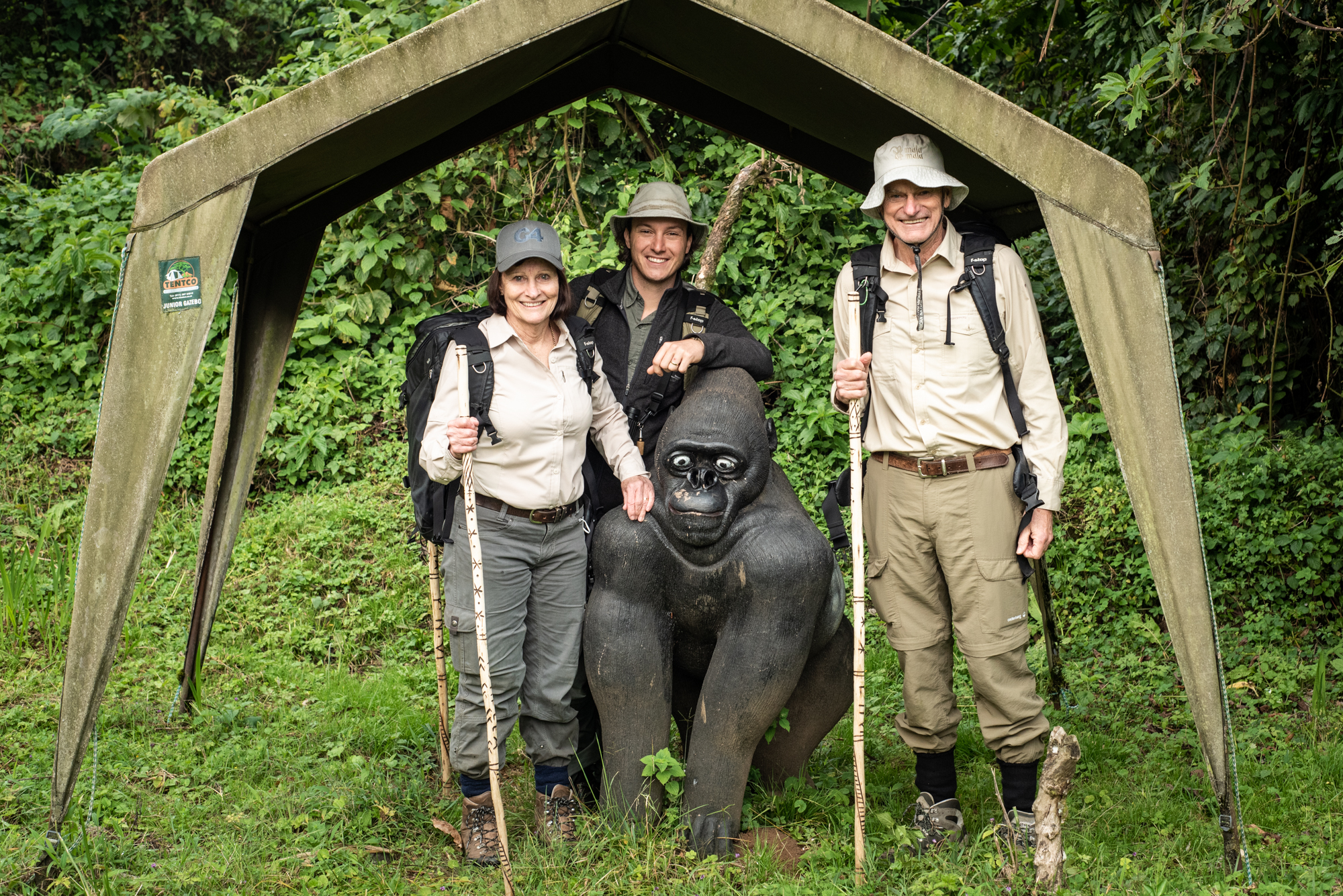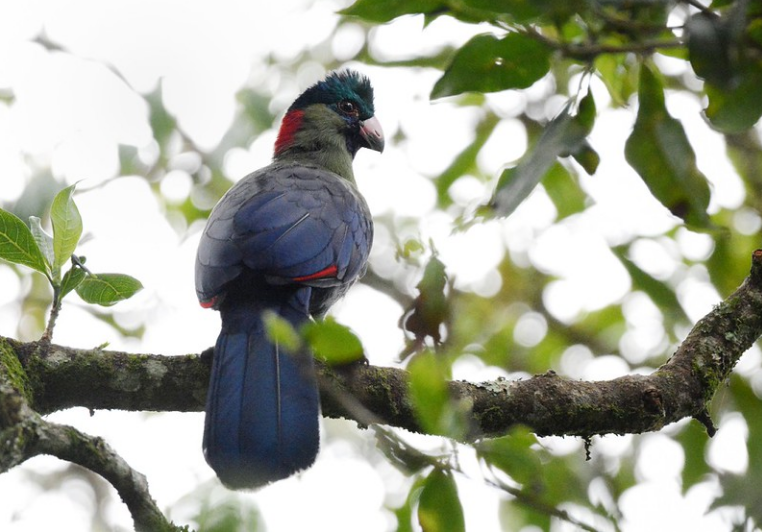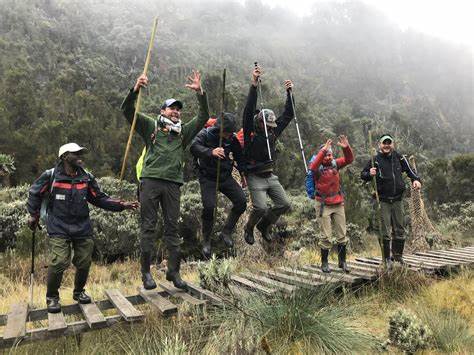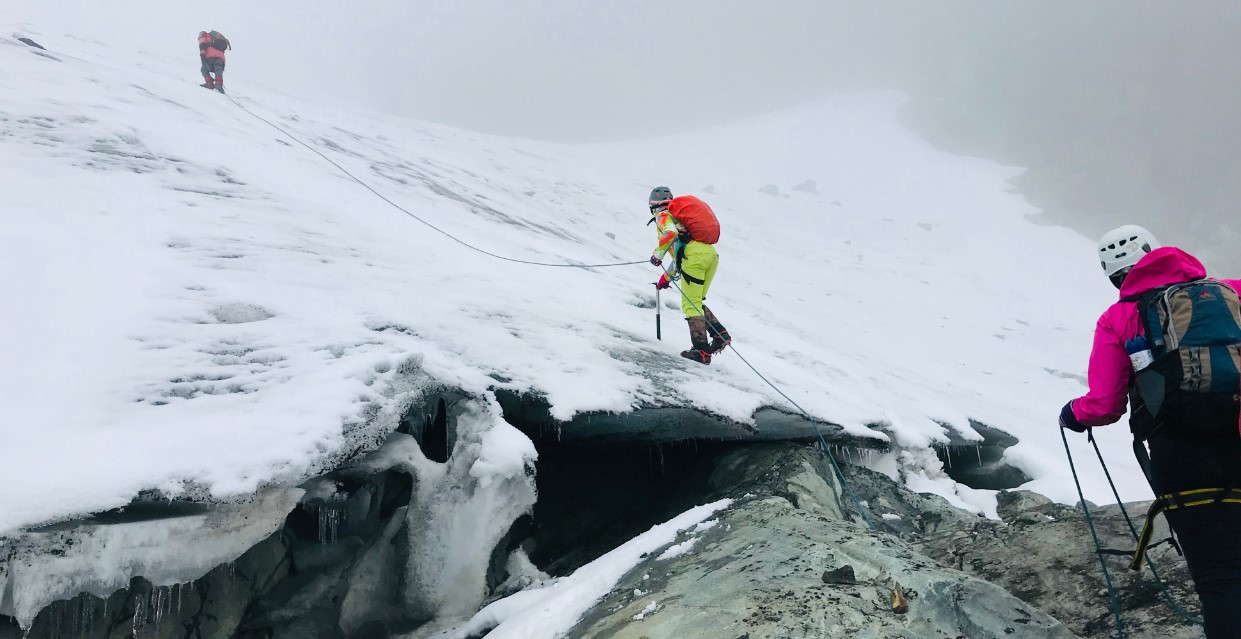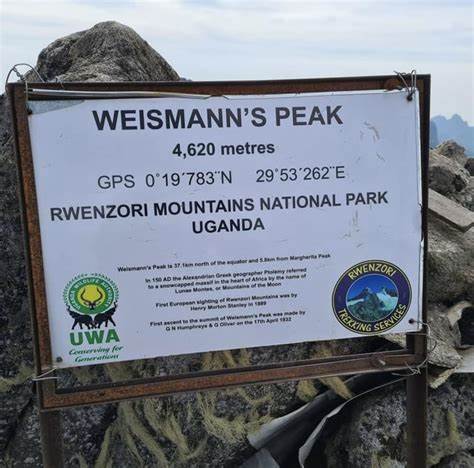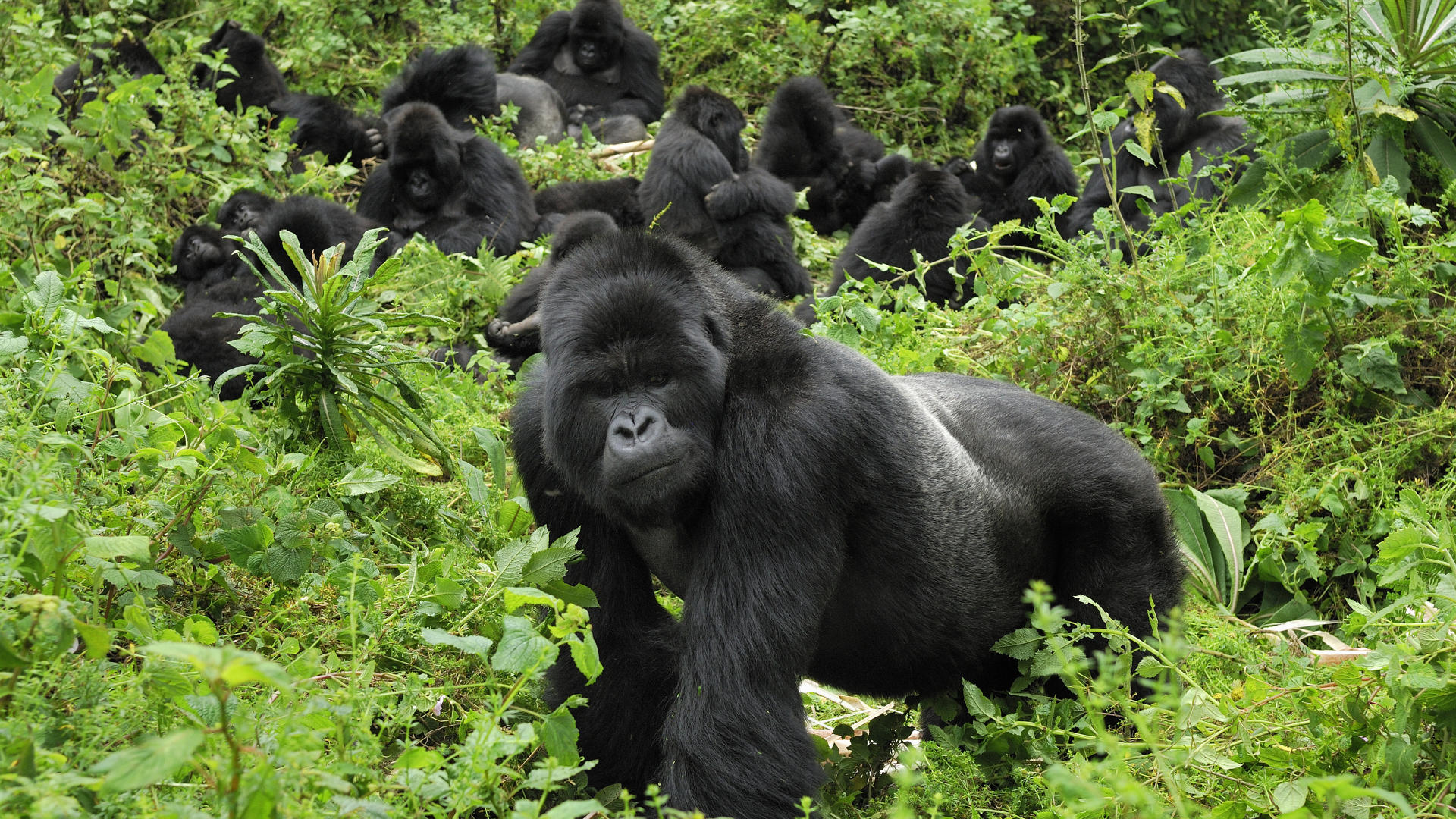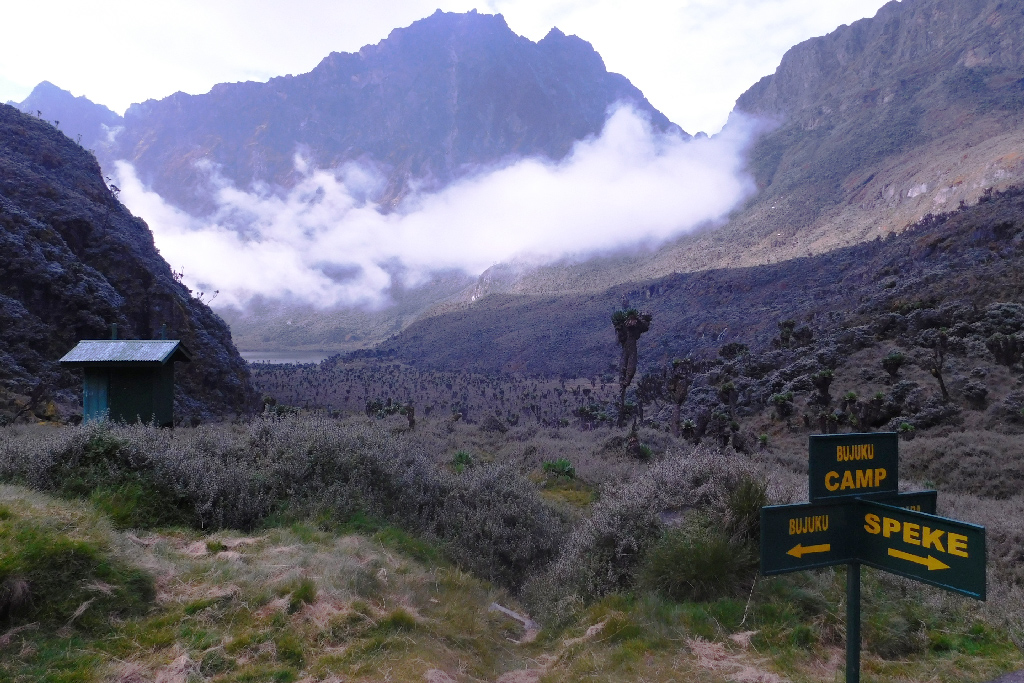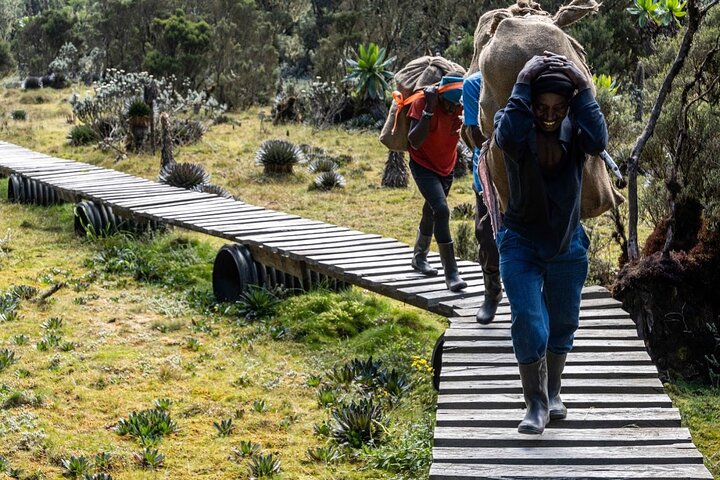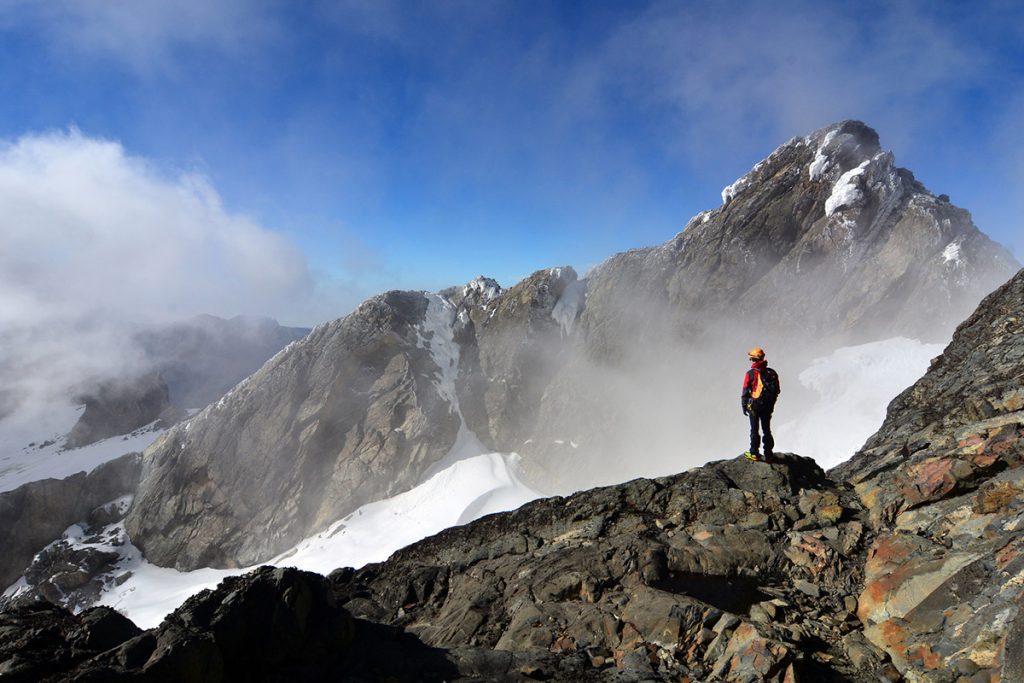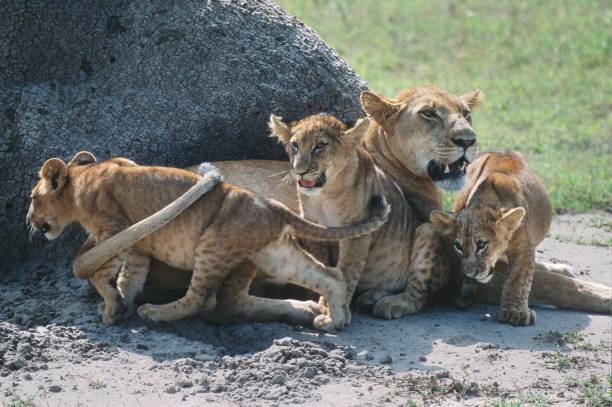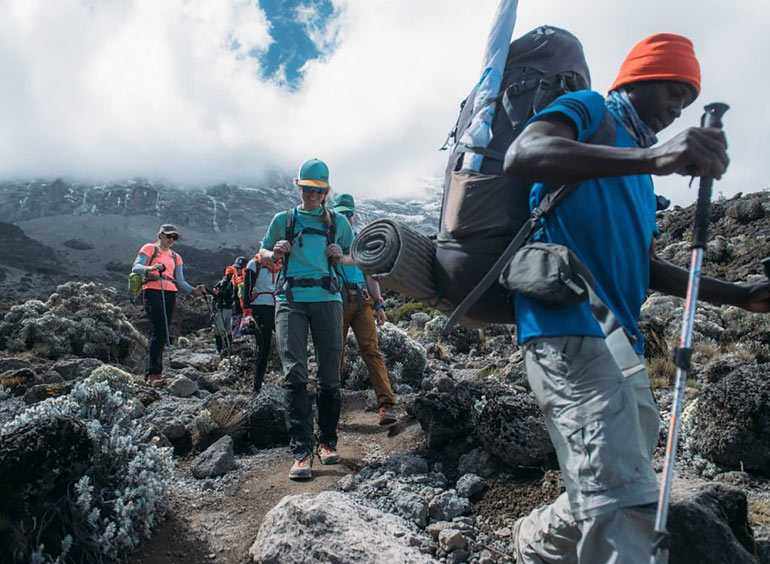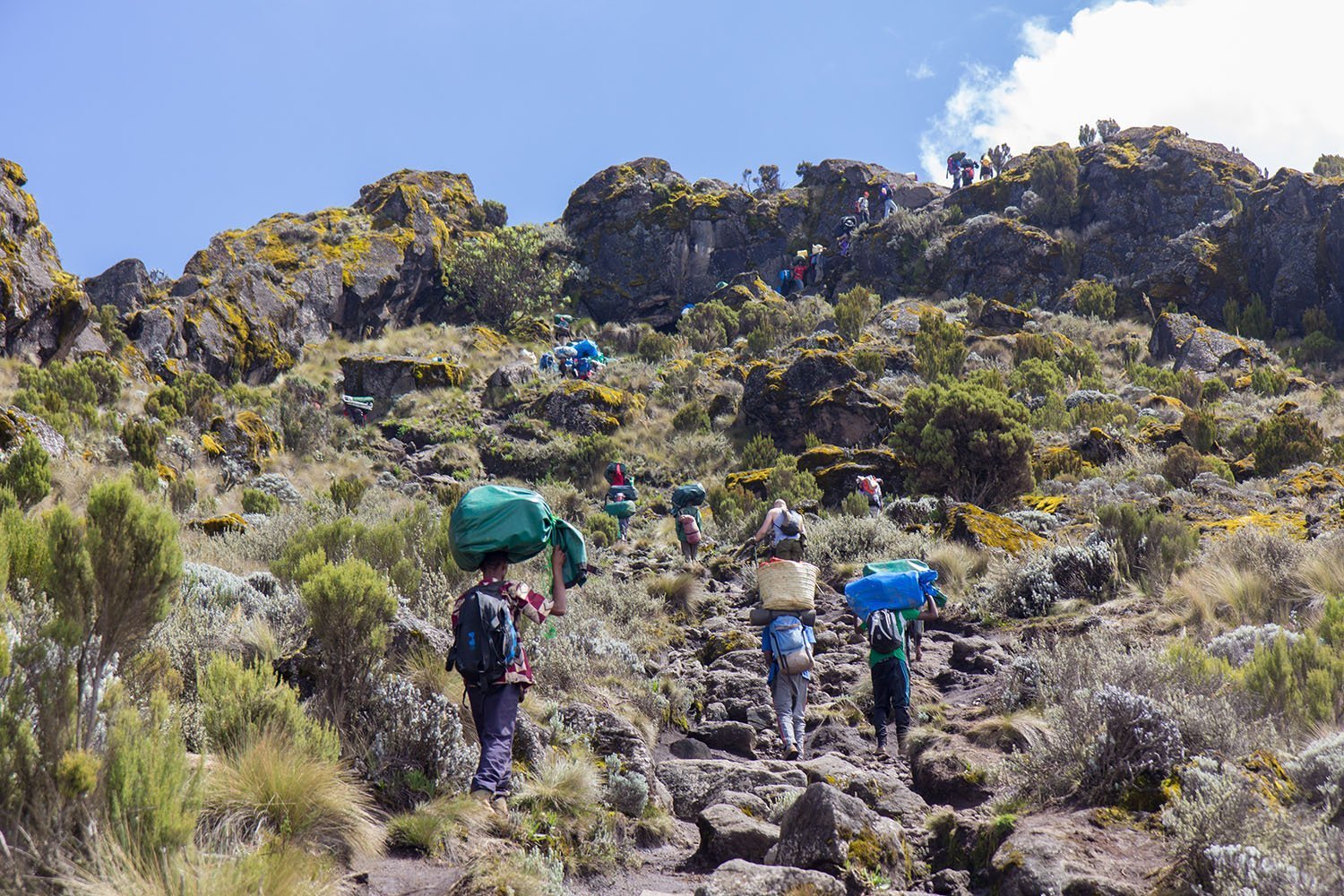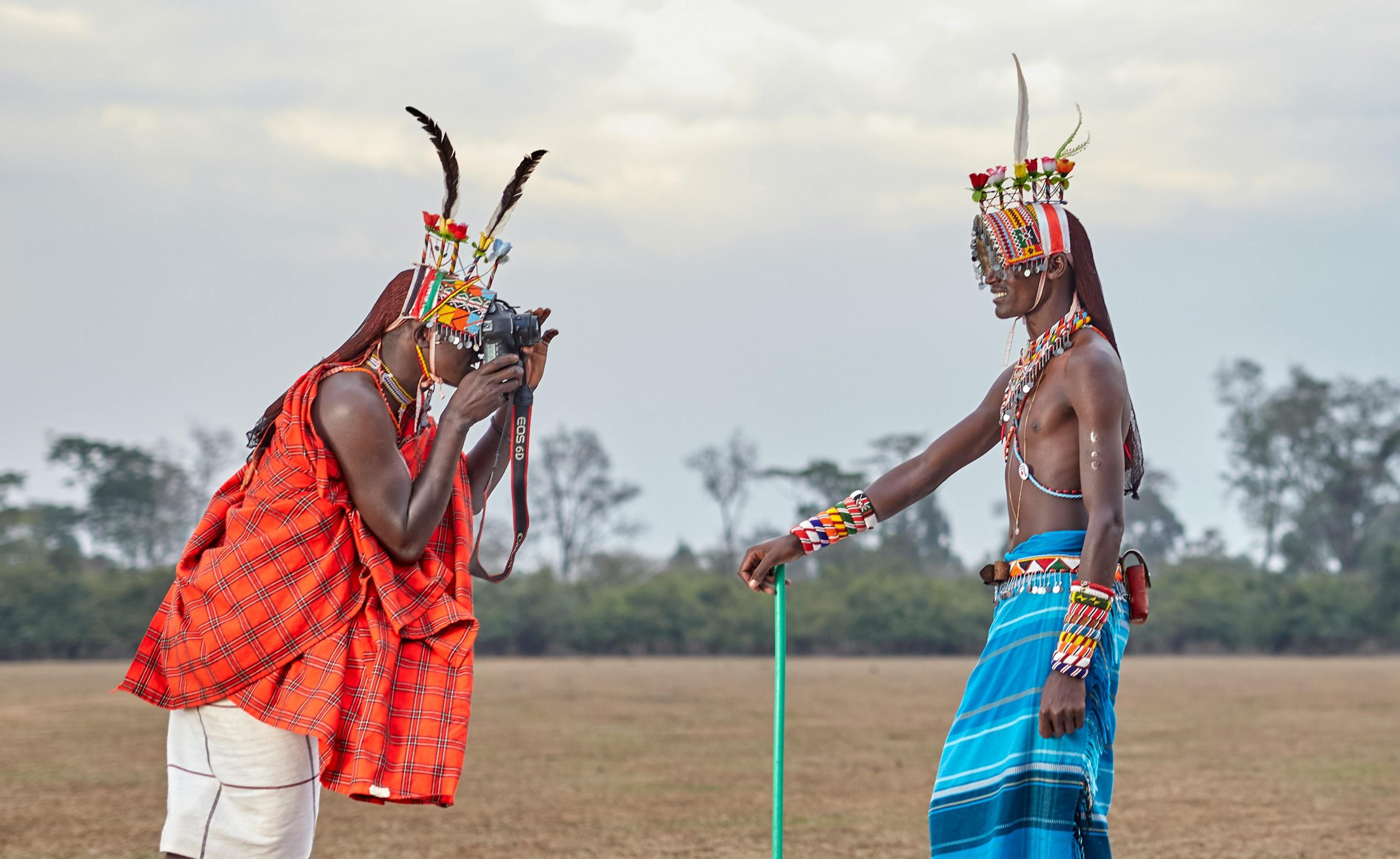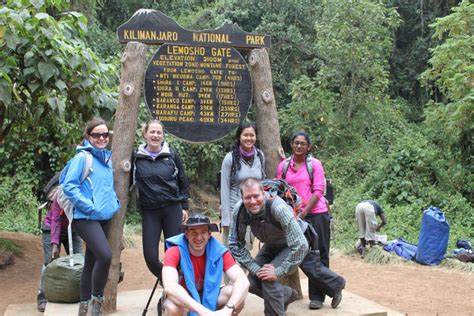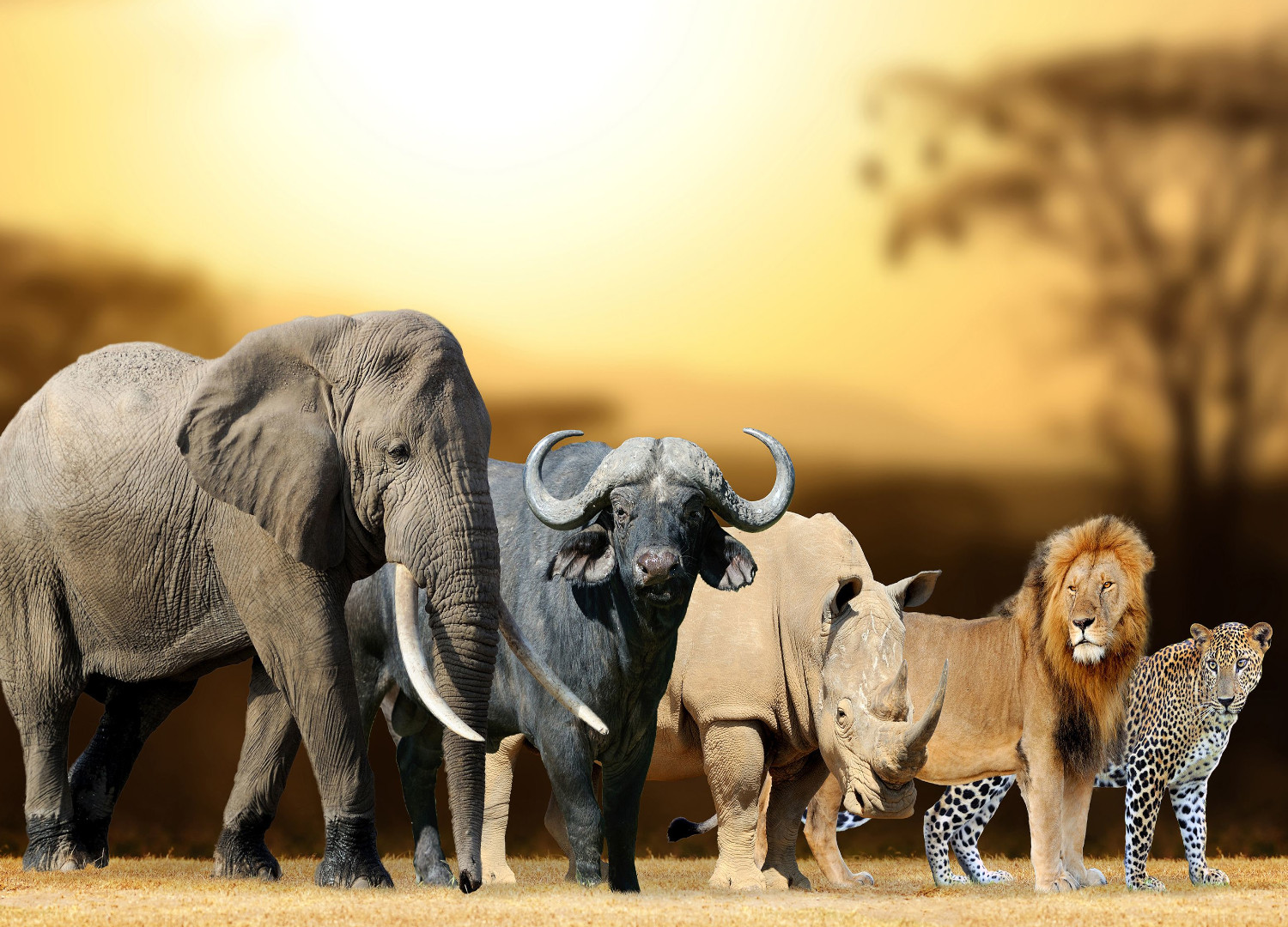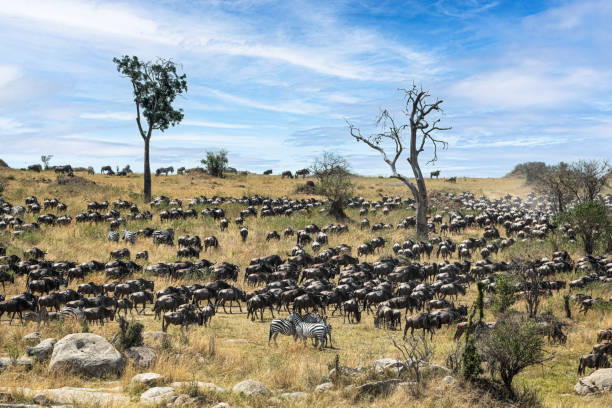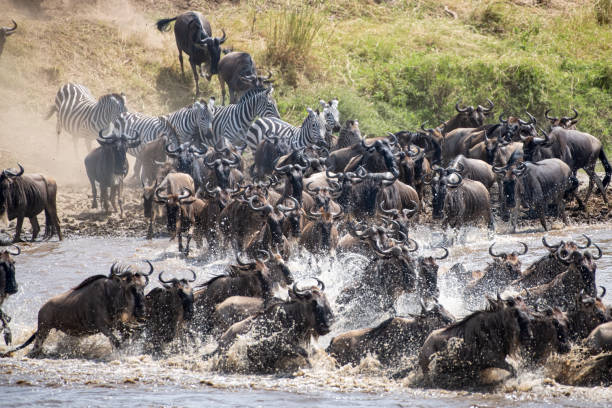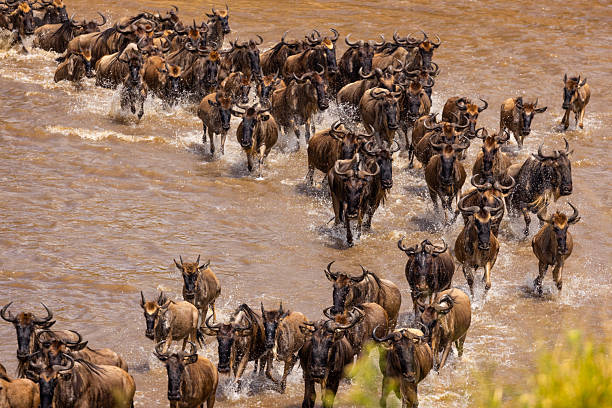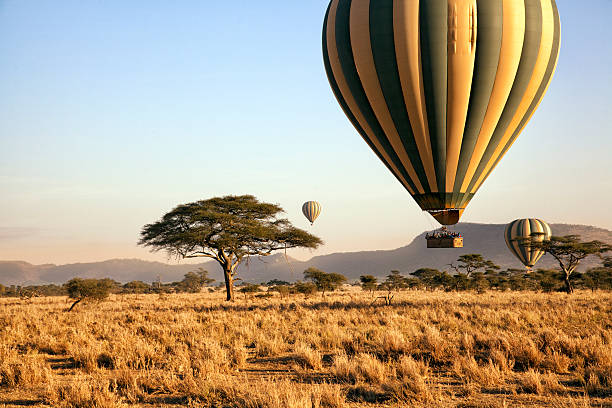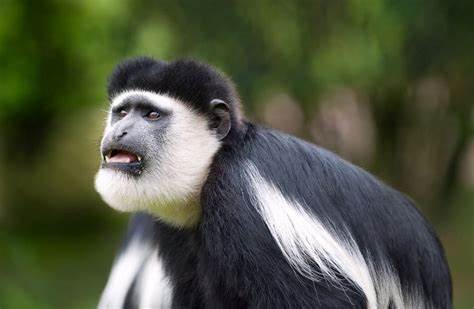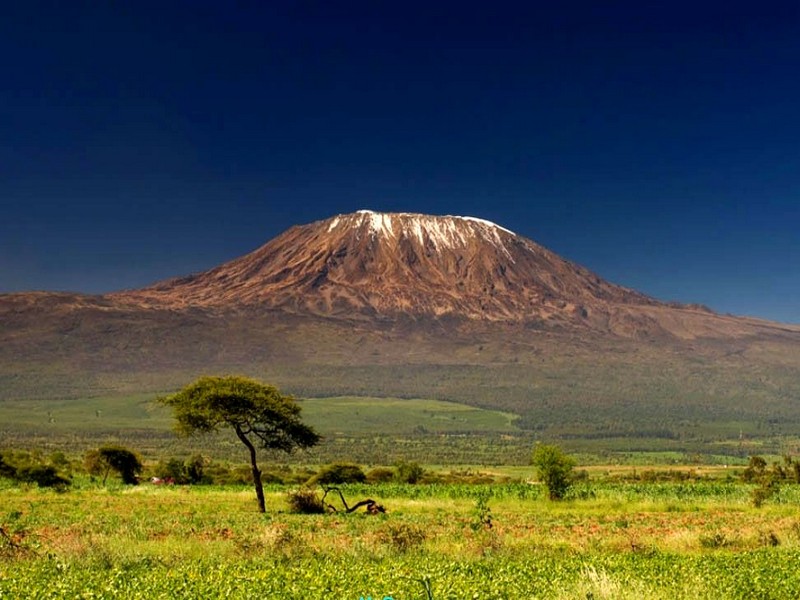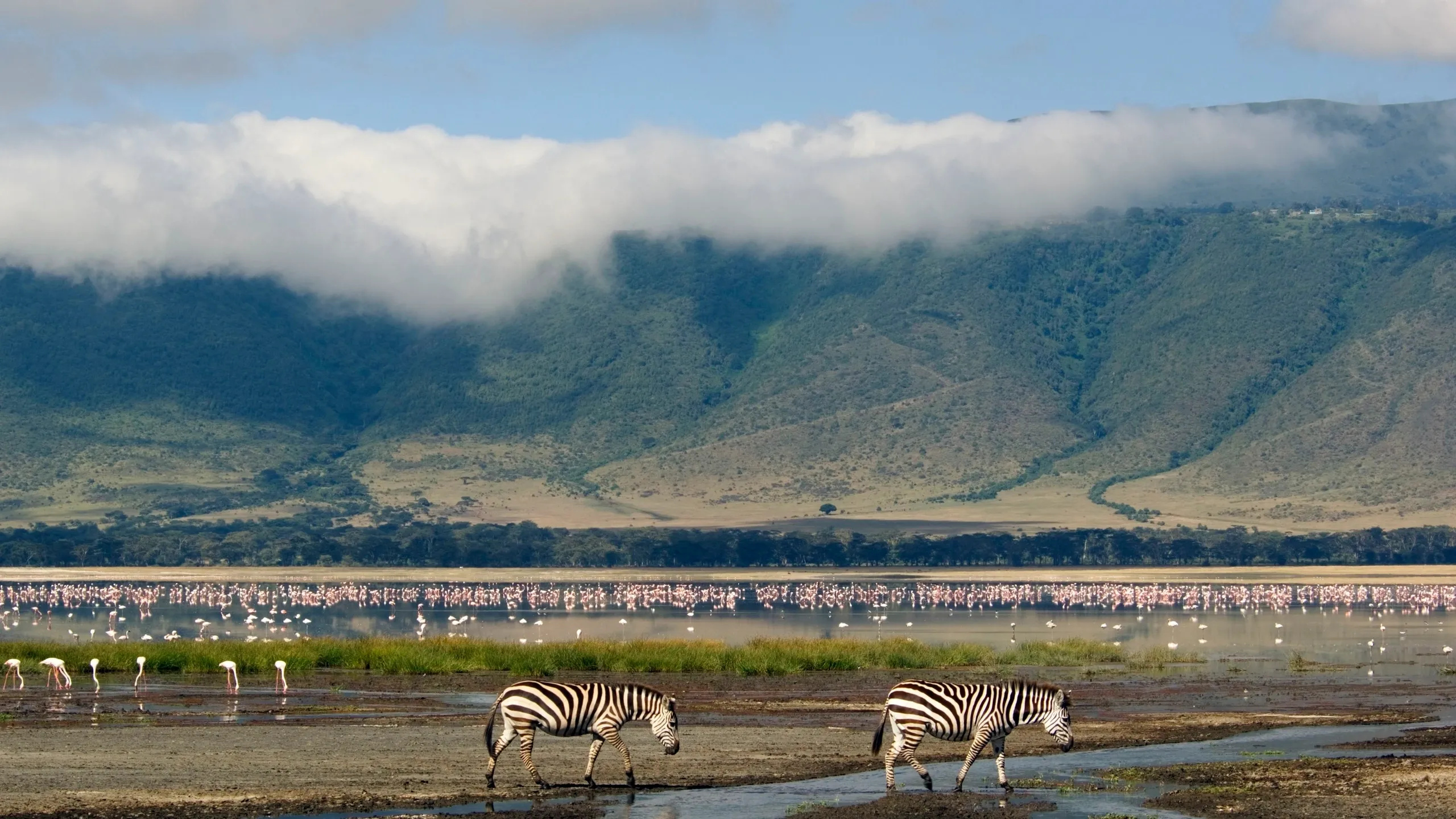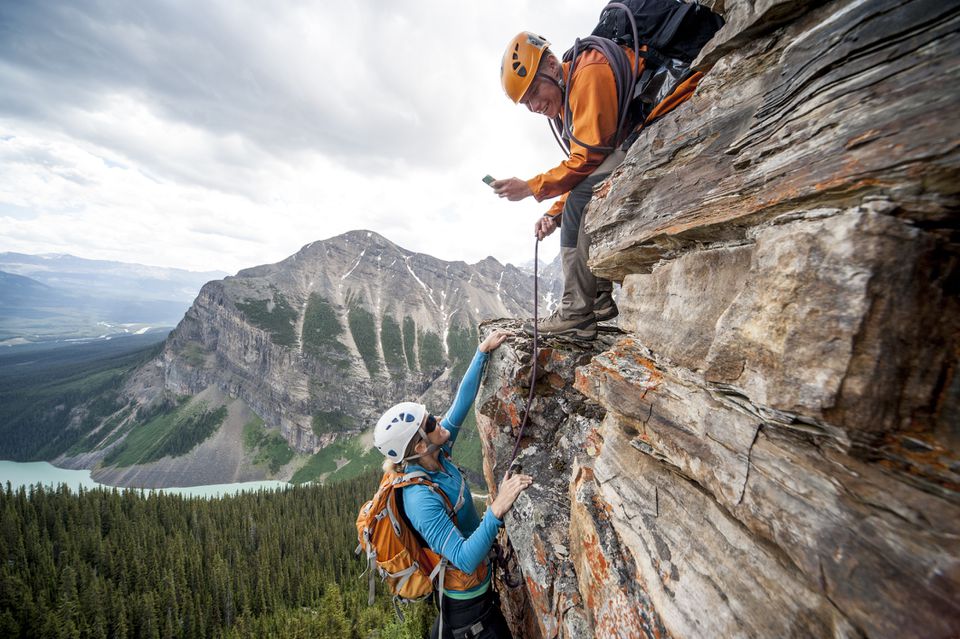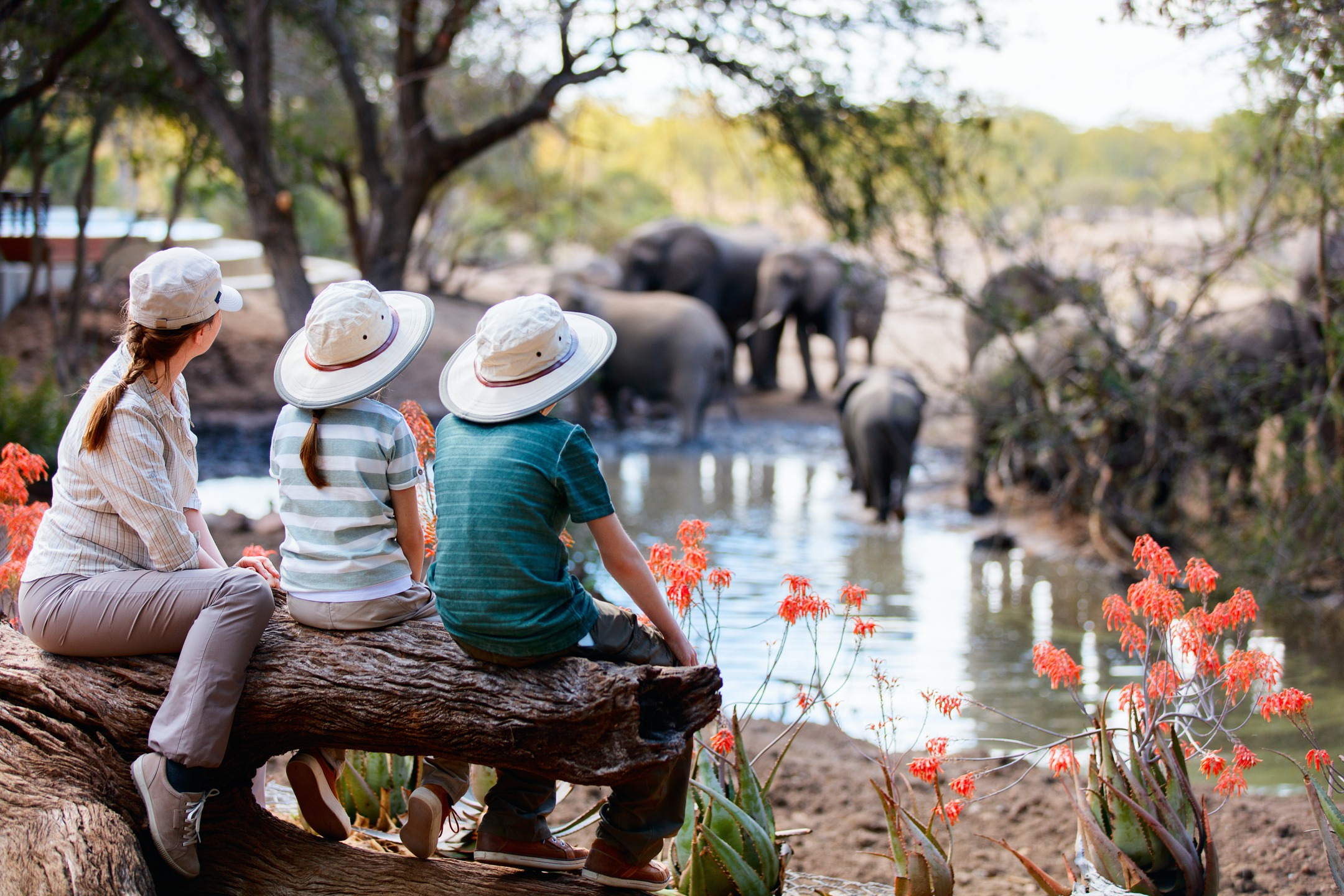The Great Migration in Africa: What, When & Where to See It
What is the African wildebeest Migration
The Great Migration in Africa: What, When & Where to See It. Africa is known for numerous attractions but one of the most exciting and thrilling adventure in the destination the great wildebeest migration. This great wildebeest migration Africa experience permits sightseers to marvel at over two million animals mostly wildebeests. But also zebras and gazelles hence ranking this big migration in Africa a top mind-blowing safari adventure in Kenya and Tanzania.
In case you may be wondering what the great migration in Africa might be, this is a yearly movement of wildebeest between Serengeti National Park in Tanzania and Masai Mara National Reserve in Kenya. To most that would love to engage in this great migration Africa safari, it’s important to understand that it’s not that an easy journey to both the animals and people. Especially, when it comes to animals they face many dangers along the way, such as predators like lions and crocodiles, as well as rivers, drought, and exhaustion.
This African great wildebeest migration runs in a circular route and this depends on the rain. So, this is the main reason as to why the timing and the location of the great animal migration in Africa change a little bit each year.
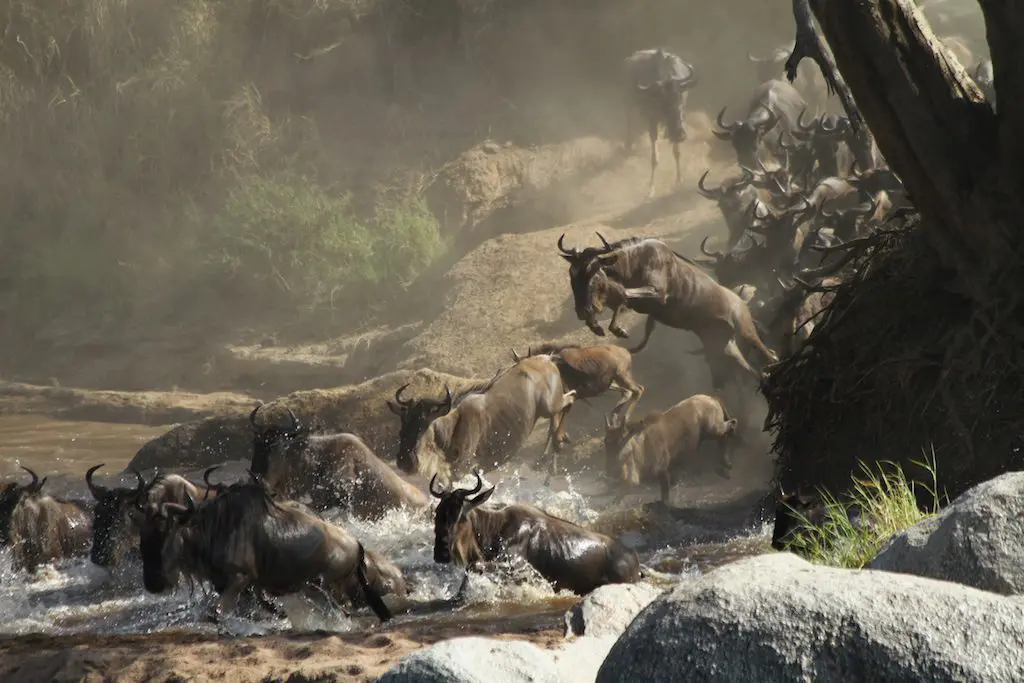
What are the great migration Africa animals
The Great Migration in Africa is a wild show, with over 1.5 million wildebeest. These are escorted by 300,000 zebras and countless gazelles. Also, topi and antelopes trekking across Tanzania’s Serengeti and Kenya’s Masai Mara for food and water. It’s a survival story, with lions, cheetahs, hyenas and crocodiles adding the stakes.
1. Wildebeests
The stars of the show, these 1.5 million gnus follow the rains for short, green grass. They create paths, recycle nutrients through poop and balance the ecosystem by grazing. Some think the wildebeests sense distant rain or storms, guiding their 1,000 mile journey.
They’re driven by an instinct to follow the rains, grazing on short, green grass. The wildebeests sheer numbers create a moving wall of animals, carving paths through the savannah that others follow. Fun fact: Wildebeests are so attuned to weather patterns that some experts think they can sense rain or even distant thunderstorms, though no one’s quite pinned that down scientifically.

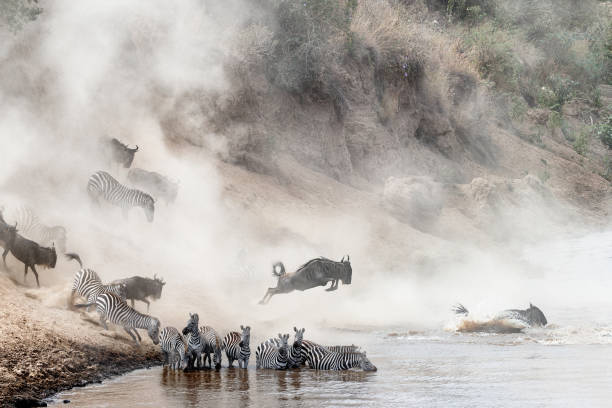
2. Zebras
About 300,000 zebras join in, using their predator-spotting skills. Zebras eat the taller, coarser grasses. Hence, clearing the way for wildebeest to get to the short stuff they love. Their teamwork makes the African Great Migration safari smoother. Additionally, their stripes add a pop of colour to the endless herds. You’ll often see them leading the way, with a knack for sniffing out danger.
3. Gazelles and Antelopes: Thomson’s and Grant’s gazelles, topi and others follow, using the cleared paths. These small herbivores add diversity but face risks from predators during this big migration in Africa. Hundreds of thousands of these herbivores add to the migration’s diversity, spotted darting through the plains.They’re quick and nimble, often witnessed dodging predators that the bigger animals might not escape.
4. Predators: Lions, leopards, Nile crocodiles, cheetahs, and hyenas stalk the herds. This happens during the chaotic river crossings, in the Mara or Grumeti Rivers. Also, this is where Nile crocodiles lie in and wait. Over 250,000 wildebeest and 30,000 zebras don’t make it each year, killed by predators, during the Mara and Grumeti river crossings.
5. Other Wildlife: Elephants, buffalo, and giraffes hang out on the sidelines. Over 500 bird species including vultures and eagles feed on the migration’s chaos, scavenging smaller prey.
Watching this big migration in Africa is like stepping into a nature documentary. Watch starting from a wildebeest calf taking its first wobbly steps. To zebras crossing a crocodile-infested river or a lion pouncing on stragglers, the animals make this journey unforgettable. It’s a reminder of how connected and resilient nature is. So, trust me, seeing the great migration Africa animals in person will leave you speechless.
Why does the Great Migration happen in Africa?
Have you ever wondered what the Great Migration in Africa meant? In quest of food and water, almost a million animals are traversing the Serengeti Mara ecosystem in Tanzania and Kenya. It’s not merely idleness; it’s an attempt at survival based on instinct and the weather. Let’s look at the causes of this incredible animal migration in Africa.
1. Following the Rains
Seasonal rainfall is the lifeblood of this East Africa great Migration. The wet season, from November to May, transforms the southern Serengeti into short grasses. During this animal Migration in Africa, wildebeests move there to graze and give birth. However, during the dry season, from June to October, those plains turn into a dusty desert with scarcely a stalk of grass or drop of water left. Thus, the herds move to the Mara region of Kenya in the north and west. Rainfall persists here, and the grasses remain verdant during this season.
2. Instincts and Perfect Timing
These animals aren’t just wandering aimlessly but are wired to follow the rains. Wildebeests and zebras might pick up on distant storms, smells in the air. Or some ancient instinct we don’t fully get yet. Their 1,000-mile loop is timed perfectly with the seasons, especially the calving season in February-March when the southern plains are safest for newborns. Those wobbly calves need to get strong fast before joining the trek, and the timing ensures they’ve got the best shot at survival.
3. The Magic of the Serengeti-Mara
Why is this great migration taking place here instead of elsewhere? The environment of the Serengeti Mara is comparable to a masterfully planned stage. It is perfect for a vast animal journey because of its open plains, distinct north-south rainfall pattern. Also, absence of significant obstacles like cities or mountains. This Serengeti Mara area has developed a fragile balance over thousands of years: the herds graze to control vegetation, their excrement fertilizes the soil, and predators like crocodiles and lions maintain healthy populations.
4. Challenges of Climate Change
However, there’s a catch: this cycle is beginning to be disrupted by climate change. Weather events disrupt the schedule, leaving animals puzzled or stranded without enough food. The movement continues for the time being, but also serves as a reminder of how unstable the situation is. The Great Migration is so captivating because of the animals’ constant movement because remaining stationary would result in famine.
You’ll be blown away if you schedule your fantastic East Africa migration safari during the ideal season if you’ve always desired to see this. The rainy season is for calving, while the dry season is for the beautiful Grumeti and Mara river crossings. I can assure you that you will have an extraordinary prime experience to nature’s show.
How does the great migration in Africa happen
There are various sightseers that ask Kilimanjaro Rwenzori when the Africa migration safari happens. So to most, they try to target it and be part of it. Well to all those that would love to be part of the big migration Africa, these are the great wildebeest migration dates to consider:
Great wildebeest Migration in Serengeti Tanzania
April to June – during the months of April to June is when the rains stop and the herds begin moving northwest through the Serengeti and this is the time when long lines of animals can be seen moving across the plains.
July to September – from the months of July to September is the best and most popular times to go on a big migration safari in Africa. This is characterised as herds reach the Grumeti River in Tanzania and later the Mara River in Kenya.
African wildebeest Migration safari in Masai Mara Kenya
The African wildebeest migration safari continues through Masai Mara Kenya from the months of October to December. In September, there are Mara river crossings from Serengeti to Masai Mara. So, the Kenya migration safari in Africa begins from October to December.
October to December – during this time the herds begin to move back south into the Serengeti as the short rains begin.
Where to See the Great Migration in Africa
Where is the best place to see the Great Migration in Africa? There are basically only two destinations where you can experience the Africa Great Migration safari. Tanzania and Kenya and the two countries that offer amazing great wildebeest migration safari experiences in Africa. The particular destinations where this big migration activity in Africa is carried out are:
1. Serengeti National Park: This is the main destination to go and experience this African migration safari. The Serengeti is a Tanzania National Park and is characterised with different landscapes such as grassy plains, hills, and woodlands.
2. Masai Mara National Reserve: This is also another destination to see the migration in Africa and most especially from the months of July to September. Despite the fact that the Masai Mara national park is smaller than the Serengeti NP, it is also rich with wildlife.
This Africa animal migration tour is carried out in a 4×4 vehicle in East Africa with a guide. Also, sightseers go on game drives early in the morning and late in the afternoon since this is the time when animals are most active.
Other sightseers choose to marvel at the great migration Africa through hot air balloon rides in Masai Mara and Serengeti. So these hot air balloon safaris in Serengeti and Masai Mara allows them to view the East Africa great migration in an aerial view hence giving you an amazing experience.
As a sightseer you should not forget to carry binoculars, a good camera, light clothing, a hat, sunscreen. Also, insect repellents these will help you to sight the animals and also be able to take close-up pictures during your great migration in Africa.
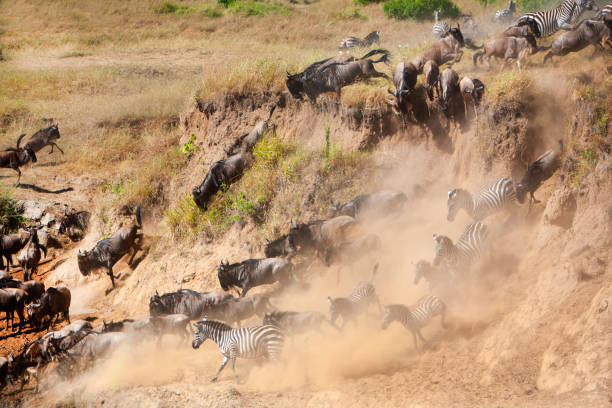
Prices for the great migration in Africa
The cost of experiencing the African wildebeest migration Safari can vary depending on the country, season, type of accommodation, and mode of travel. Below is a general Africa migration safari price guide for those on budget or luxury travellers Also, it should be noted that these prices can change at any given time of the year as quoted by Kilimanjaro Rwenzori.
So, this depends on the season and with peak seasons (especially July–October), and it is advisable to book early. Or consult with reputable local tour operators such as Kilimanjaro Rwenzori, Serengeti Masai Mara, Goar Africa safari Tours and Tanzania National Parks for custom East Africa migration packages and discounts. Our other partners, Car Rentals 4×4 offer affordable luxury self drive safari great wildebeest migration packages in Africa.
- Budget Africa migration safari Packages: $150 – $300 per person per day (Includes basic camping, shared 4×4 vehicle, meals, and park entry fees)
- Mid-Range Africa animal migration tour Packages: $350 – $600 per person per day (Includes comfortable lodges, private game drives, and domestic flights)
- Luxury African wildebeest migration Safari Packages: $700 – $2,000+ per person per day (Includes luxury lodges/tented camps, hot air balloon rides, fine dining, and private tours)
- Hot Air Balloon Experience in Serengeti and Masai Mara: $450 – $600 per person for a 1-hour flight
(Includes champagne breakfast and certificate)
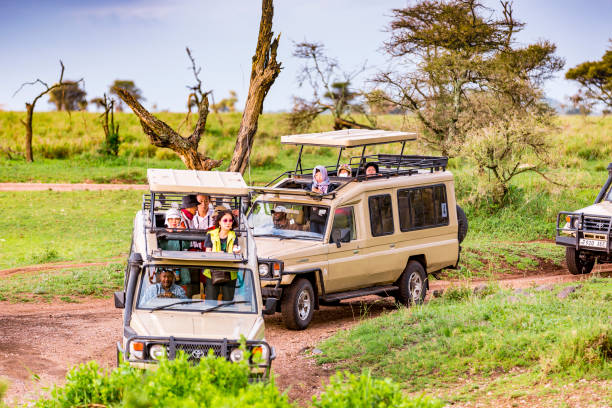
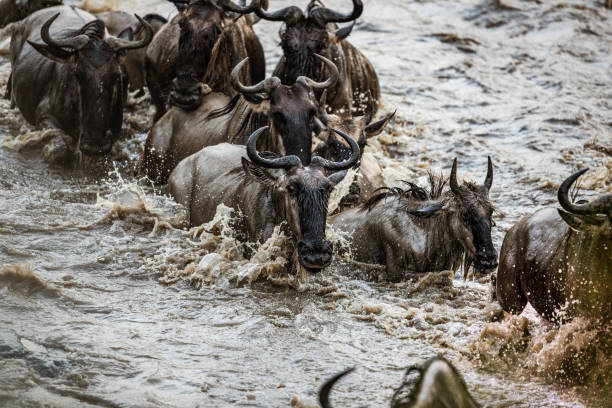

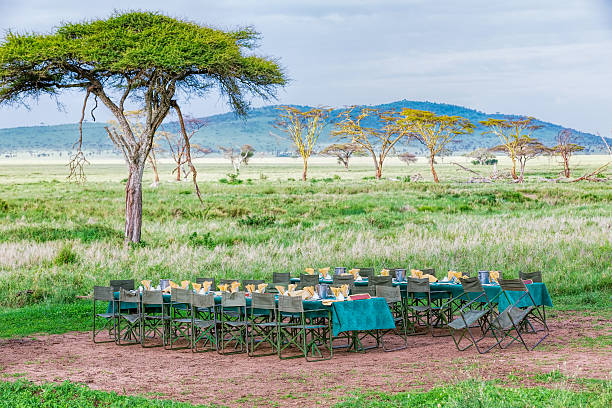
Why You Should Engage in This great migration in Africa
When it comes to sightseers having the best kind of Africa safari tour experience there is a lot to understand. Also note as to why participating in the Great Migration safari in Africa is more than just wildlife viewing it’s an immersion into one of nature’s most dramatic stories. Below are reasons as to why you should be part of the great migration in Kenya and Tanzania.
- Witness One of the World’s Greatest Natural Events: Over 2 million animals moving in sync with nature is an awe-inspiring sight that only a few get to witness in their lifetime.
- Photographic Opportunities: whether you’re a professional or casual photographer, the vast landscapes, herds, predator-prey action, and sunrise/sunset scenes offer unmatched photo moments.
- Cultural Encounters: Beyond the wildlife, you also get to meet the Maasai people and other local communities, enriching your African experience.
- Adventure and Thrill: From crossing crocodile-infested rivers to night drives listening to lions roar, the thrill of unpredictability adds to the magic of the safari.
When is the Worst and Best time to to See Africa’s Great Migration
The best time to see the great migration in Africa
Which part of this natural wonder most interests you will determine the optimal time to see the animal migration in Africa. How long does the Great Migration last? The Serengeti Southern Plains become a nursery during the best time to see migration in Africa from January to March. Also, this when the world’s largest calving season takes place. Under the watchful gaze of predators and protective herds, hundreds of thousands of young wildebeest make their first movements during these months.
The wildebeests herds in the Serengeti-Mara ecosystem start moving northward in search of greener pastures in the Western Corridor. Additionally, this is as a result of the dry season heating up in April and May. For brave travelers, this best time of year to see the great migration in Africa offers unique viewing opportunities. Despite the difficulties caused by excessive rainfall and muddy roads.
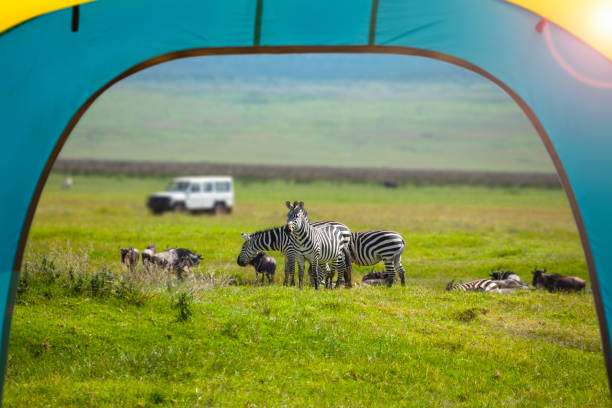
The peak tourist season in Serengeti National Park arrives in June and July, when the dramatic river crossings begin along the Western Corridor’s Grumeti River. These great migration Africa months lead into the absolute prime time – August and September – when the famous Mara River crossings reach their crescendo in Kenya’s Masai Mara National Reserve. It is seen to be the high point of the entire great migration Africa cycle to witness these risky crossings.
Additionally, this is where resolute wildebeest face dangerous waters and crocodiles that lurk. As the seasons change once more, the magnificent circle of the great migration in Africa is completed in December. So this is when the southern voyage begins and October and November bring the eastern migratory phase.
Worst time to see the great migration in Africa
Even though there are amazing viewing possibilities for the Great Migration Africa all year long, some times of the year are thought to be less suitable for tourists. Generally speaking, the worst time to visit Africa for migration is between April and May. So, this is because of a lot of rainfall and impassable roads in Serengeti and Masai Mara. Hence, can significantly reduce vision and movement during the African wildebeest migration. Though this time of year offers its own unique experiences, tracking the major Africa great wildebeest migration can sometimes be more difficult. This is due to the dispersed herds during the November–March wildebeests calving season in Africa.
Month-by-Month Highlights for the great Migration in Africa
| Month | Location | What to expect | Best Viewing Areas |
|---|---|---|---|
| January-March | Serengeti (Southern Plains) | Calving season – thousands of wildebeest born daily in Serengeti Tanzania, attracting predators. | Ndutu Area, Ngorongoro Conservation Area |
| April-May | Serengeti (Central/Western) | Grasslands Migration | Moru Kopjes, Seronera Valley |
| June-July | Western Corridor | River crossings at Grumeti River begin; crocodile encounters and dramatic predator action – a must see great migration experience in Africa. | Grumeti River, Kirawira |
| August-September | Maasai Mara (Kenya) | Peak River Crossings | Mara River, Paradise Plains |
| October-November | Eastern Serengeti | Herds move south from Serengeti to Masai Mara; great for off-peak great migration tours Africa safaris and fewer crowds. | Lobo Valley, Klein’s Gate |
| December | Southern Serengeti | Pre-calving Movement | Lake Ndutu, Gol Kopjes |
Rwenzori trekking itineraries
Rwenzori Guide
- Rwenzori trekking guide
- When to visit Rwenzori
- How to get to Rwenzori
- Luxury Rwenzori Accommodations
- Budget Rwenzori Accommodations
- Attractions in Rwenzori
Kilimanjaro climbing tours, Tanzania
Kilimanjaro Guide
- Kilimanjaro climbing guide
- Luxury Kilimanjaro Hotels
- Cheap Kilimanjaro accommodations
- Gameparks near Kilimanjaro
Useful links + other African safari packages
- Rwenzori trekking services
- Kilimanjaro Climbing guide
- 3 day gorilla trekking self drive to Bwindi
- Rwenzori trekking guide
- 3 day Queen Elizabeth self drive from Kampala
- self drive Uganda
- Car rentals 4×4 East Africa
- Masai Mara Great Migration
- Serengeti Wildebeest Migration
- Big 5 safari Uganda
- Best time to visit Rwenzori
- what to pack for your trek
- Rwenzori vs Kilimanjaro
Affordable luxury Great migration tours Africa (packages) in Kenya and Tanzania
You might also like:

